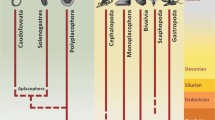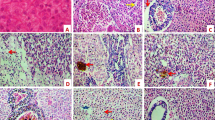Abstract
The influence of habitat conditions on the activity, the structure of the substrate specificity (the ratio of the substrate hydrolysis rates), and the kinetic parameters of substrate hydrolysis due to the effect of hemolymph cholinesterase of the mussel Crenomytilus grayanus was studied. Mussels were collected from areas that are influenced by seasonal and stationary upwelling, as well as from a polluted area. Upwelling and anthropogenic pressure were shown to alter the structure of hemolymph cholinesterase substrate specificity in mussels, up to complete loss of the ability to catalyze the hydrolysis of propionyland butyrylthiocholine. It was established that during the seasonal upwelling the efficiency of the cholinergic process in mussels is provided by a wide range of effective concentrations of the substrates and by decreasing their affinity to the enzyme. Under the conditions of chronic anthropogenic pollution, the cholinesterase of the mussel hemolymph loses its ability to hydrolyze substrates other than acetylthiocholine.
Similar content being viewed by others
References
Boyarova, M.D. and Lukyanova, O.N., DDT and HCH in mollusks from Peter the Great Bay (Sea of Japan), in Mater. III Mezhd. nauchno-prakt. konf. “Morskiye pribrezhnye ekosistemy. Vodorosli, bespozvonochnye i produkty ikh pererabotki”, Vladivostok, 8–10 sentyabrya 2008 g. (Proc. III Int. Sci. Pract. Conf. “Marine Coastal Ecosystems. Algae, Invertebrates and Products of Their Processing”, Vladivostok, September 8–10, 2008), Vladivostok: Tikhookean. Nauchno–Issled. Rybokhoz. Tsentr, 2008, pp. 181–182.
Brestkin, A.P., Kuznetsova, L.P., Moralev, S.N., et al., Kholinesterazy nazemnykh zhivotnykh i gidrobiontov (Cholinesterases of Terrestrial Animals and Aquatic Organisms), Vladivostok Tikhookean. Nauchno–Issled. Rybokhoz. Tsentr, 1997.
Grigoryeva, N.I. and Khristoforova, N.K., Ecological and hydrological features of the western Peter the Great Bay, Probl. Reg. Ekol., 2001, no. 5, pp. 49–58.
Dovzhenko, N.V., Kavun, V.Ya., Belcheva, N.N., and Chelomin, V.P., Biochemical parameters of oxidative stress as indicators of anthropogenic pollution of aquatic ecosystems, in Mater. konf. molodykh uchenykh Tikhookean. Okeanol. Inst. im. V.I. Il’icheva Dal’nevost. Otd. Ross. Akad. Nauk “Okeanologicheskiye issledovaniya”, 27–30 noyabrya 2001 g. (Proc. Conf. Young Scientists of V.I. Il’ichev Pac. Oceanol. Inst., Far Eastern Branch, Russ. Acad. Sci. “Oceanographic Studies”, November 27–30, 2001), Vladivostok: Dal’nauka, 2002, pp. 290–296.
Dubina, V.A., Mitnik, L.M., and Katin, O.I., Features of water circulations in Peter the Great Bay inferred from satellite multisensor data, in Sovremennoye sostoyaniye i tendentsii izmeneniya prirodnoi sredy zaliva Petra Velikogo Yaponskogo morya (The Current Status and the Trends in the Environment of Peter the Great Bay, Sea of Japan), Moscow: Geos, 2008, pp. 82–96.
Kavun, V.Ya., Chepkasova, A.I., Podgurskaya, O.V., and Kovalev, N.N., Adaptation of the cholinergic system of Crenomytilus grayanus (Bivalvia: Mytilidae) to conditions of natural and anthropogenic impacts, Izv. Ross. Akad. Nauk, Ser. Biol., 2011, no. 2, pp. 220–226.
Kovekovdova, L.T. and Simokon’, M.V., Trends in the chemical and ecological situation in coastal waters of Primorsky Krai. Toxic elements in sediments and aquatic organisms, Izv. Tikhookean. Nauchno–Issled. Inst. Rybn. Khoz. Okeanogr., 2004, vol. 137, pp. 310–320.
Cornish-Bowden, A., Principles of Enzyme Kinetics, London Butterworth, 1976.
Mikheev, Ye.V. and Kovalev, N.N., Role of species differences in nerve tissue cholinesterase of Pacific cephalopods, Izv. Tikhookean. Nauchno–Issled. Inst. Rybn. Khoz. Okeanogr., 2007, vol. 151, pp. 460–465.
Podgurskaya, O.V., Kavun, V.Ya., and Lukyanova, O.N., Heavy metal accumulation and distribution in organs of the mussel Crenomytilus grayanus from upwelling areas of the Sea of Okhotsk and the Sea of Japan, Russ. J. Mar. Biol., 2004, vol. 30, no. 3, pp. 188–195.
Podgurskaya, O.V. and Kavun, V.Ya., Comparative analysis of subcellular distribution of heavy metals in organs of the bivalve mollusks Crenomytilus grayanus and Modiolus modiolus in a continuously polluted environment, Russ. J. Mar. Biol., 2005, vol. 31, no. 6, pp. 373–381.
Podgurskaya, O.V. and Kavun, V.Ya., Assessment of the adaptation capabilities of the bivalves Modiolus modiolus (Linnaeus, 1758) and Crenomytilus grayanus (Dunker, 1853) under increased levels of heavy metals in the environment, Russ. J. Mar. Biol., 2012, vol. 38, no. 2, pp. 188–196.
Rozengart, E.V., Substrate–inhibitor analysis of cholinesterase from hemolymph of the Pacific gastropod mollusc Neptunea eulimata, J. Evol. Biochem. Physiol., 2001, vol. 37, no. 3, pp. 219–224.
Hochachka, P.W. and Somero, G.N., Strategies of Biochemical Adaptation, Philadelphia Saunders, 1973.
Shulkin, V.M., Metally v ekosistemakh morskikh melkovodii (Metals in Ecosystems of Shallow Marine Waters), Vladivostok Dal’nauka, 2004.
Shulkin, V.M., Kavun, V.Ya., Tkalin, A.V., and Presley, B.J., The effect of metal concentration in bottom sediments on the accumulation of metals by the mytilids Crenomytilus grayanus and Modiolus kurilensis, Russ. J. Mar. Biol., 2002, vol. 28, no. 1, pp. 43–51.
Shuntov, V.P., Biologiya dal’nevostochnykh morei Rossii (Biology of the Far Eastern Seas of Russia), Vladivostok: Tikhookean. Nauchno–Issled. Rybokhoz. Tsentr, 2001, vol. 1.
Belcheva, N.N., Zakhartsev, M.V., Dovzhenko, N.V., et al., Anthropogenic pollution stimulates oxidative stress in soft tissues of mussel Crenomytilus grayanus (Dunker, 1853), Ocean Sci. J., 2011, vol. 46, no. 2, pp. 85–94.
Bonacci, S., Brown, M., Dissanayake, A., et al., Esterase activity in the bivalve mollusk Adamussium colbecky as a biomarker for pollution monitoring in the Antarctic marine environment, Mar. Pollut. Bull., 2004, vol. 49, pp. 445–455.
Brown, M., Davies, I.M., Moffat, C.F., et al., Characterisation of choline esterases and their tissue and subcellular distribution in mussel (Mytilus edulis), Mar. Environ. Res., 2004, vol. 57, no. 3, pp. 155–169.
Cotou, E., Tsangaris, C., and Henry, M., Comparative study of biochemical and immunological biomarkers in three marine bivalves exposed at a polluted site, Environ. Sci. Pollut. Res., 2013, vol. 20, no. 3, pp. 1812–1822.
Ellman, G.L., Courtney, K.D., and Andres, V., Jr., and Featherstone, R.M., A new and rapid colorimetric determination of acetylcholinesterase activity, Biochem. Pharmacol., 1961, vol. 7, no. 1, pp. 88–95.
Gorbi, S., Lamberti, C.V., Notti A., et al., An ecotoxicological protocol with caged mussels, Mytilus galloprovincialis, for monitoring the impact of an offshore platform in the Adriatic Sea, Mar. Environ. Res., 2008, vol. 65, no. 1, pp. 34–49.
Kavun, V.Ya., Shulkin, V.M., and Khristoforova, N.K., Metal accumulation in mussels of the Kuril Islands, north-west Pacific Ocean, Mar. Environ. Res., 2002, vol. 53, pp. 219–226.
Leinio, S. and Lehtonen, K.K., Seasonal variability in biomarkers in the bivalves Mytilus edulis and Macoma balthica from the northern Baltic Sea, Comp. Biochem. Physiol., Part C: Toxicol. Pharmacol., 2005, vol. 140, nos. 3–4, pp. 408–421.
Moralev, S.N. and Rozengart, E.V., Comparative Enzymology of Cholinesterases, La Jolla Int. Univ. Line, 2007.
Nunes, B., The use of cholinesterases in ecotoxicology, Rev. Environ. Contam. Toxicol., 2011, vol. 212, pp. 29–59.
Payene, J.F., Mathieu, A., Melwin, W., and Fancey, L.L., Acetylcholinesterase, an old biomarker with a new future? Field trials in association with two urban rivers and a paper mill in Newfoundland, Mar. Pollut. Bull., 1996, vol. 32, no. 2, pp. 225–231.
Shulkin, V.M. and Kavun, V.Ya., The use of marine bivalves in heavy metal monitoring near Vladivostok, Russia, Mar. Pollut. Bull., 1995, vol. 31, pp. 330–333.
Shulkin, V.M., Presley, B.J., and Kavun, V.Ya., Metal concentrations in mussel Crenomytilus grayanus and oyster Crassostrea gigas in relation to contamination of ambient sediments, Environ. Int., 2003, vol. 29, no. 4, pp. 493–502.
Tkalin, A.V., Lishavskaya, T.S., and Shulkin, V.M., Radionuclides and trace metals in mussels and bottom sediments around Vladivostok, Russia, Mar. Pollut. Bull., 1998, vol. 36, pp. 551–554.
Tsangaris, C., Kormas, K., Strogyloudi, E., et al., Multiple biomarkers of pollution effects in caged mussels on the Greek coastline, Comp. Biochem. Physiol., Part C: Toxicol. Pharmacol., 2010, vol. 151, no. 3, pp. 369–378.
Valbonesi, P., Sartor, G., and Fabbri, E., Characterization of cholinesterase activity in three bivalves inhabiting the North Adriatic Sea and their possible use as sentinel organism for biosurveillance programmes, Sci. Total Environ., 2003, vol. 312, pp. 79–88.
Wallace, W.G., Lee, B.G., and Luoma, S.N., Subcellular compartmentalization of Cd and Zn in two bivalves. I. Significance of metal-sensitive fractions (MSF) and biologically detoxified metal (BDM), Mar. Ecol.: Prog. Ser., 2003, vol. 249, pp. 183–197.
Author information
Authors and Affiliations
Corresponding author
Additional information
Original Russian Text © N.N. Kovalev, V.Ya. Kavun, E.Ya. Kostetsky, Ye.V. Mikheev, O.V. Podgurskaya, 2016, published in Biologiya Morya.
Rights and permissions
About this article
Cite this article
Kovalev, N.N., Kavun, V.Y., Kostetsky, E.Y. et al. Hemolymph cholinesterase activity in the Mussel Crenomytilus grayanus (Dunker, 1853) that was exposed to adverse natural and anthropogenic conditions. Russ J Mar Biol 42, 65–72 (2016). https://doi.org/10.1134/S1063074016010120
Received:
Published:
Issue Date:
DOI: https://doi.org/10.1134/S1063074016010120




